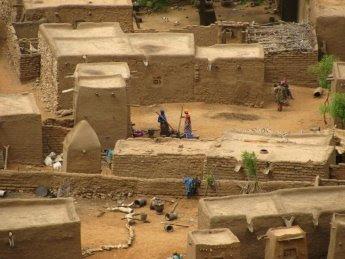


Ok So I am going to indulge my Public Health portion of me on this post. Sorry if this post is a bit fragmented in my thoughts... I am trying to beat the cybercafe clock.
So; after some sneaking around and lots of determination I was able to attend the 17é Annual Conference on Tuberculosis and Respiratory Diseases that was offered by the African Union on TB (Jen I would like to dedicate this post to you); Here is a link to the sponsoring website (
http://www.theunion.org/news/more-than-530-delegates-attend-17th-africa-region-conference.html) The conference was attended by over 530 people; many leading researchers from across Africa and WHO AFRO, His Excellency Blaise Compaoré, President of Faso, and the Chairmanship of Seydou Bouda, Minister of Health, ( photo of me and the MOH). I made some great contacts and made friends with a great group of handsome Ethiopian researchers (photo). I even met the team of researchers that I will be working with for my dissertation research from Orange Free State South Africa.
The issues surrounding TB are very dynamic and the implications of Multidrug resistant TB (MDR) and extremely drug-resistant tuberculosis (XDR) could really devastate countries. It was originally believed that the resistance was more of an issue in Eastern Europe but every country in Africa with the ability to diagnose MDR has found it. There are relatively very few effective drugs to treat and cure TB right and with mass migration of people for economic and political reasons this is a problem the continent has to deal with on the whole.. not just each country.
The health systems play an enormous role in causing drug resistance; lack of appropriate access to testing, treatment and diagnosis within health systems are causing ineffective disease management with many patients not returning for treatment, coupled by difficulties in monitoring and evaluation.
Imagine if a patient falls sick with TB; they would first have to access a care provider (this could mean a long, expensive journey). Often times the patient would wait hours in a crowded hospital waiting room where TB could easily spread; The clinic would have to possess the ability to see if the patient has TB, MDR TB, or XDR TB and prescribe the appropriate drug regimen and take the needed precautions. Assuming the medicine is both economically and logistically accessible to the patient he or she could then begin treatment. After a certain amount of time the patient would need to return again to see if they are responding to treatment; If they are not responding the 2nd line drugs must be available to treat the patient. The staff must be present to counsel the patient in the importance of being compliant. Many factors need to come together to successfully control the spread of TB in Africa.
HIV co-infection adds another dimension to the problem with the need for integrated management and diagnosis. I see strengthening the health systems as an ideal (yet not quick) solution to some of these issues. I have yet to understand the perfect balance between decentralization of the health system and strengthening of the periphery but I think I am not alone.
The role of community is also important to combat the stigma around TB. In some communities TB is viewed as a sexually transmitted disease and people do not want to come forward with it.
Overall the conference was a great platform to showcase some of the successes and challenges from TB programs across Africa and to emphasize the need for increased monitoring and evaluation, diagnostic capabilities, commitment from the international and national levels, access to medication and ,of course, strengthening of health systems.































